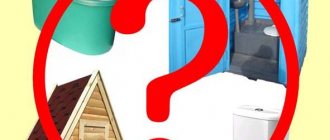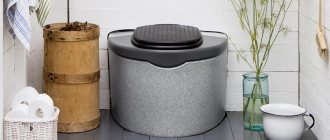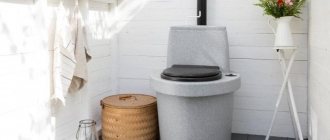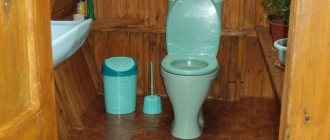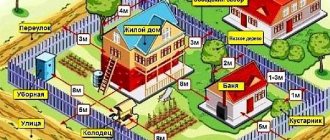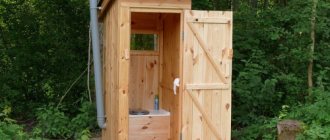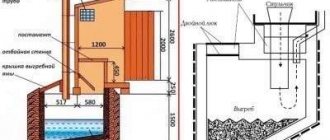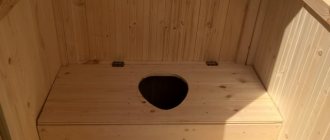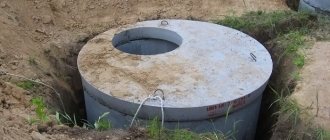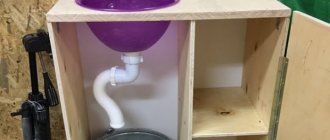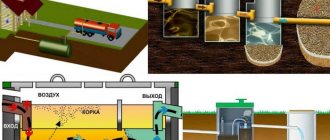Advantages and disadvantages of a composting toilet for a summer residence
A factory-made Finnish garden toilet has a huge range of advantages:
- with a small number of people living in the dacha, the storage tank fills slowly;
- low cost of peat and low consumption for backfilling;
- easy waste disposal;
- no odor provided there is working ventilation;
- the toilet seat is installed in any convenient place in the country house;
- models made of frost-resistant plastic are able to winter in outdoor cabins.
The peat dry closet also has weaknesses. Main disadvantages:
- Every owner of a peat dry closet is immediately faced with the problem of how the mechanism that spreads peat works. To make the powder crumble, turn the handle back and forth. However, even such a tedious procedure does not guarantee high-quality filling of all waste. The mechanism does not add peat under the toilet seat hole. You have to add the powder manually with a spatula. If this is not done, bad odors are guaranteed.
- The reservoir is equipped with a liquid drain. The hose connection is located high. The liquid will begin to drain when it reaches the desired level. Until this time, it accumulates, emitting an unpleasant odor. To speed up draining, the tank will have to be lifted and tilted manually.
- Solid organic waste accumulates under the opening of the toilet seat. They are not able to distribute themselves throughout the reservoir. The unpleasant procedure is performed manually with a spatula.
- If a peat dry closet has a large tank, it is difficult for one person to carry it out. You will need an assistant, but it is better to buy a model with wheels.
- Problems with ventilation do not arise when a peat dry closet is placed inside an outdoor cabin in the country. If you place a toilet seat in the house, it is advisable to have an exhaust fan, otherwise during the heat the room will be filled with bad aromas.
- Despite the light weight of the plastic toilet, the peat dry closet is considered a stationary structure. Move it to another place if there is an urgent need.
A composting toilet for a dacha has many disadvantages, but the design still surpasses the classic options with a cesspool in terms of comfort.
The operating principle of peat toilets for a summer residence
The appearance of the product resembles a toilet with a tank, only instead of water, peat is filled inside the container. The spreader is a mechanism driven by a rotating handle. Sprinkle organic waste after each visit to the toilet.
Important! During powdering, you need to make sure that the peat completely covers all impurities.
The toilet has three names:
- Powder closet. The toilet is so called because of the method of powdering waste with peat.
- Composting toilet. Waste sprinkled with peat is suitable for making compost. There is a thermal toilet in which ready-made compost is formed inside the tank.
- Dry dry toilet. Waste after visiting the toilet is sprinkled with dry peat. The processed mass remains slightly moist upon unloading. This is where the third name came from.
Peat has good absorption properties. Natural material absorbs liquid that does not drain into the drain pan. Additionally, peat absorbs bad odors. In the waste mixed with the dry mass, beneficial microorganisms multiply, converting sewage into compost. Decomposed organic matter does not have a sharp unpleasant odor, but it cannot be used immediately for fertilizer. The waste must first be rotted in a compost heap for 1-2 years.
All peat dry closets are equipped with a ventilation outlet. Air ducts can be included with the toilet seat or purchased separately, depending on the model. The hood is installed 2 m high without turning. If it is not possible to install a straight pipe, the connection is made with elbows, and to improve draft the air duct is equipped with a fan.
In the video there is a peat toilet for a summer house with an exhaust fan:
Design and operating principle of the structure
The structure of a peat toilet is very simple: in fact, it’s just two plastic tanks, one of which is filled with peat or a sawdust-based mixture, and the other collects and processes waste.
In detail, the design of the dry closet looks like this:
The upper tank is a container for storing peat, equipped with a rotary handle for transferring it to the main tank. The mechanism works in a similar way to flushing a regular toilet.- The lower tank is a waste storage tank. It can have a volume from 44 to 230 liters. Equipped with a seat and lid, like a toilet.
- Plastic housing that protects the tanks and makes the design more aesthetically pleasing.
- A vent pipe that connects to the bottom tank. Has a length of up to 4 m.
- A set of filters and hoses for drainage of liquid waste. Not available in all dry closet models; it is better to choose a design with these parts, as they simplify operation and slow down the filling of the storage tank.
In some models, especially those equipped with a capacity of 150 liters or more, wheels are attached to the bottom of the storage bin for more convenient movement of processed waste to the compost pit.
The principle of operation of a dry toilet is the biological decomposition of waste into three fractions:
- solid - compost used as fertilizer;
- liquid - moisture from waste and waste products of microorganisms that drain into the soil without harming it, unlike chemicals from a liquid dry closet;
- gaseous - methane, carbon dioxide and other components formed during the decomposition of waste are removed through the ventilation pipe.
To fill the waste, not ordinary pure peat is used, but material enriched with microorganisms and biologically active substances. Thanks to this, the process of aerobic decomposition of organic matter into mineral compounds occurs in the toilet.
Another advantage of the peat mixture is porosity. Due to its cellular structure, the material can not only decompose solid waste, but also absorb and process liquids.
The absorption volume is limited: the effect will be noticeable only if the toilet is used by 1-2 people; in other cases, some of the liquid waste will seep through the filler, and then a drainage system will be required.
No aggressive chemicals are used at any stage of waste processing, so the output is environmentally friendly material that can be safely buried in the soil to enrich its composition.
How to choose a peat toilet for your dacha
Factory-made composting toilets are designed almost identically, but there are differences in some nuances. When choosing a model for a summer residence, consider the following points:
- toilet seat height, toilet seat size;
- volume of the reservoir for the accumulation of sewage;
- equipped with an indicator for filling the tank with waste;
- permissible load on a plastic toilet seat.
You immediately need to think about where the toilet will be located in the dacha. The length of the drain hose and air ducts for ventilation are determined at the installation site.
Advice! When using a peat dry closet in winter in an outdoor cabin at the dacha, choose heated toilet seats.
How to install a peat toilet in the country
The installation of a peat toilet at the dacha begins with unpacking the product and studying the instructions. The toilet seat is temporarily placed in a permanent place, holes are marked: in the wall for the drain hose and on the ceiling for the ventilation pipe.
After installation of communications, the product itself is installed. The toilet seat is fixed to the floor with screws. Peat purchased separately in a dacha bag for a peat toilet is poured inside the tank. The ventilation pipe and drain hose are attached to the outlet pipes. By turning the handle, the peat spreader mechanism is tested.
During installation, the most difficult process is arranging effective ventilation. For an outdoor booth in a dacha, the question is not critical. When installing indoors, correctly calculate the diameter of the air duct:
- a pipe with a cross-section of 40 mm will be enough if the residents of the dacha use the dry closet approximately 20 times a day;
- if the number of visits to the toilet reaches 60 times, install two air ducts with a diameter of 40 mm and 100 mm;
- when the amount of use exceeds 60 times a day, additional exhaust fans are installed with air ducts with a diameter of 40 mm and 60 mm.
The exact installation rules are specified in the instructions for each toilet model.
Advantages of a peat dry closet
Dry toilets can have different designs, and liquid models are more common and well-known, widely used in trains, summer outdoor cabins and other places. In a peat bathroom, the composting method - biological waste, mixed with peat, decomposes and turns into compost under the influence of active substances and microorganisms. In the future, the recycled waste can be used at the dacha as fertilizer.
Having first appeared in Finland in the 70s of the 20th century, peat toilets quickly spread throughout Europe. Today they have become known in our country, and even domestic companies have appeared that produce similar designs.
The popularity of this type of dry toilet is due to a large number of advantages over analogues, and especially the classic country pit toilet.
The advantages of a peat bathroom include:
- affordable cost and quick payback;
- ease of installation and maintenance - there is no need to supply water or electricity to the dry closet, and it is enough to clean it once a year during normal use by a family of 3-4 people;
- autonomy;
- mobility - the design is similar in size to a conventional ceramic toilet; it can be installed both inside the house and outside due to the fact that it is made of reliable frost-resistant plastic;
- complete absence of unpleasant odors and insects when all parts of the dry closet are installed correctly;
- environmental friendliness - unlike chemical liquids contained in other dry toilets, peat does not harm the environment;
- obtaining high-quality fertilizer as a result of waste processing;
- possibility of recycling food waste;
- ergonomics - a correctly chosen toilet is quite convenient to use;
- hygiene.
A peat toilet can be used as a temporary toilet, required during the construction of a house, while the sewerage system has not yet been installed, or as a permanent latrine. The only drawback of the design is the need to organize high-quality ventilation.
A dry toilet usually comes with a ventilation pipe; to ensure natural draft, it must rise above the roof by 0.5-1 m, which can make installation of the structure inside a residential building difficult.
Do-it-yourself peat toilet for the cottage
Looking at photos of homemade peat toilets at the dacha powder closet, it’s easy to visually develop a plan for making it yourself. To correctly decide on the design, first choose the location of the toilet in the dacha. The absence of a cesspool allows you to place the toilet seat anywhere. Usually, in a dacha, a room is allocated for a toilet inside the house or an outdoor stall is installed.
The toilet seat is made of wood. First, a rectangular timber frame is assembled. All sides are covered with plywood to form a box. A hole is cut out in the top shelf using a jigsaw. To finish it, it is convenient to use a plastic cover removed from an old toilet.
The storage tank is made from a plastic bucket. A hole is drilled from below, the fitting is fixed and a hose is put on to drain the liquid. The bucket is inserted inside the cut hole and covered tightly with a lid.
The toilet seat is fixed to the floor of a cubicle or designated room inside the house. An additional container with peat and a shovel is installed nearby. The drainage hose is led outside. Ventilation is provided in the room.
Caring for a Finnish peat toilet for a summer residence
A peat dry closet will not take much time for the dacha owner to maintain. The whole process is based on removing the storage tank after it is filled. Waste is stored in a designated area. The compost obtained after 1-2 years is used to feed garden crops.
After emptying, the tank is washed. Water is used with the addition of detergents. Preparations are purchased specifically designed for composting toilets. They contain additional components that eliminate odor and facilitate the rapid processing of organic waste.
Peat models can turn waste into fertilizer
In recent years, electric dry closets have become very popular. The only downside of this model is its cost. The main advantage is the processing of fecal matter and toilet paper into fertilizer.
For this toilet to work, it must be connected to the electrical network. The bottom tank has two parts: one for liquid waste, the second for toilet paper and feces. Liquid waste goes directly into the compost pit through a special waste hose.
A second container is used to create fertilizer. After each emptying, the waste must be covered with peat. Thanks to the ventilation system, toilet paper and feces are dried. When the bottom tank is full of waste, toilet paper and peat, it is poured into the compost pit. To obtain natural fertilizer, the waste must be filled with a little water.
Reviews of peat toilets for summer cottages
Real reviews help you choose a powder closet model for use in your dacha. Owners are happy to share their impressions of the purchased models.
Reviews of the Finnish peat toilet Ekomatik for the dacha
Vladimir Sergeevich Tulin, 39 years old, Aksai
Among many companies, Ekomatic was preferred. The toilet seat is made of high quality durable plastic. There are no gaps under the closed lid. The two of us live at the dacha. The tank can be removed once a season, but it’s better to remove it more often, otherwise it’s too heavy. I like the soft seat. The smell is practically inaudible.
Reviews of the Piteco 505 peat toilet for the garden
Valentina Petrovna Kogan, Alekseevka
Last spring I bought a Piteco peat toilet for my dacha and have not yet been disappointed with its performance. The quality of the plastic is normal. The downside is the exhaust pipes. They are slightly deformed in places. It didn’t work out to connect, so I bought new pipes. The toilet seat cover, about 5 mm, forms a gap between the body. I had to glue a rubber seal on the bottom. Otherwise I liked the purchase.
Reviews of the Finnish peat toilet Biolan for the dacha
Svetlana Aleksandrovna Ivanchenko, 30 years old, Alzamay
Two years ago we purchased a Finnish peat toilet Biolan with a capacity of 140 liters for our dacha. The purchase was successful, they placed it in an outdoor booth. In the Biolan Komplet model, all the details are thought out well, there are no cracks. My husband cleans the tank at the end of the season.
Evgeny Viktorovich Mukhin, 36 years old, Aprelevka
It’s good that I chose the Biolan peat toilet with a waste separator. There are no smells. Waste accumulates in two containers, which is very convenient for cleaning. The only negative I think is the high chair. I had to make a footrest.
Reviews of peat toilet Thermal toilet for a summer residence
Elena Anatolyevna Strizhenko, 38 years old, Artemovsk
I didn’t find any reviews about the L&T Termotoilet thermal toilet, so I bought it for luck. There are no complaints during the season of use. The waste actually turns into almost finished compost, but I still put it in a pile until the next season. I think energy independence is a plus. At the dacha, the electricity is often cut off, but the toilet continues to work. To obtain a positive effect, you must close the lid tightly.
How to do it yourself?
Option for home
The construction of a peat dry closet for a summer residence is not complicated. That is why many people prefer not to buy factory products, but to build such toilets with their own hands. The obvious advantage of such structures is the possibility of their use in places where there is no access to even the simplest sewer tank such as a cesspool.
A simple bathroom can be installed even in a small room
Peat dry closets can be made according to two schemes. The first involves using the system indoors, the second involves installing it inside an outdoor booth.
In this section I will describe both algorithm options:
- The first thing you need to do when designing a peat toilet for your home is to choose a container. Since it is not worth keeping a filled (even half) tank indoors for a long time, the optimal volume does not exceed 20 liters. The best choice is the so-called bucket toilet, made of resistant plastic.
These containers are quite suitable
- Then we will equip the room. Most often, you can limit yourself to highlighting a corner in a separate bathroom, since a certain level of privacy and isolation is still needed.
- Another important requirement is ventilation. It is advisable not to limit yourself to ventilation under the ceiling, but to install an exhaust fan for bathrooms (100 mm is just enough). Using such a fan will at least partially solve the problem of unpleasant odor.
An exhaust fan like this helps a lot when there is an unpleasant odor.
- If you have purchased a bucket toilet, you can use it without any additional equipment. But for other containers it is advisable to make a toilet seat. To do this, we make a box without a back wall from timber and planed boards, which we install on the floor. The height to the seat should be a maximum of 450 - 500 mm, and the frame should support a weight of at least 100 kg.
When selecting weight characteristics, you need to focus on the dimensions of the people who will live in the house. Additional reinforcement of the structure may be required.
Box-toilet with a door in the outer wall
- We leave a hole in the top of the box - it should be located exactly above the container. We install a hinged lid for the toilet on top - it can be purchased at any plumbing store.
- We place or hang a peat tank nearby or hang it on the wall. We attach a small scoop to the reservoir with a cord or chain, which we will use to pour composting material into the toilet.
Photo of an equipped bathroom in a country house
The system starts very simply:
- The peat mixture is poured into the container in a layer of approximately 2-3 cm.
- After each use, sprinkle the waste with a small amount of peat or peat mixture.
- As it is filled, or simply if we have free time, we move the toilet box, pull out the container and take the waste into the compost pit.
- After use, rinse the tank and return it to its place.
Using a bag makes recycling easier
To optimize the recycling process, it is sometimes recommended to place a thick bag of biodegradable polyethylene in the tank. On the one hand, yes, it’s more convenient to throw it away. On the other hand, you still have to wash the bucket. In addition, even biodegradable polyethylene takes a very long time to compost, and not completely, so it is unlikely that waste can be used as fertilizer.
Approximately these bags can be used for recycling
Outdoor option
The street option has both pros and cons:
The cubicle design has both pros and cons.
- on the one hand, you can use a very large container, so you will have to clean the toilet no more than once or twice a season;
- the absence of odor in the house is also an argument for placing a dry closet outdoors;
- on the other hand, even in summer it’s not so convenient to go to the toilet outside. And in the autumn-winter period, pleasure becomes completely doubtful.
However, if you use the dacha only in the warm season, then this option will suit you.
Instructions for equipping a latrine will be as follows:
Drawing of a street version with dimensions
- In the chosen location we dig a small pit, the depth of which will be equal to or slightly less than the height of the container that will be used for the toilet.
Pit toilet
- From the pit we lay a trench about 2 m long. We fill about 30-40 cm of gravel or other drainage material at the bottom of the trench.
If drainage is expected, then the toilet should be located as far as possible from living quarters, beds and water intake points.
- At the bottom of the pit we install a plastic container with a capacity of 50 - 250 liters. We make a hole in the bottom of the container, to which we attach a short pipe, leading it into the drainage trench. This pipe will drain liquid waste.
Option with a grate for draining the liquid fraction
- Inside the container we install a plastic grid with small holes. It will serve as a false bottom, allowing liquid to pass through but retaining solid waste.
We cut a hole in the base above the tank
- We erect a wooden toilet on top of the pit with the installed container, resting it on a frame made of timber with a cross-section of at least 50x50 mm fixed to the ground. Columns made of brick or concrete blocks can be erected in the corners as additional supports.
- We build the toilet house in such a way that access to the tank is provided from the rear wall. To do this, we install a separate hatch at the back that tightly closes the composting container.
- Here we install a ventilation pipe with a diameter of at least 75 mm, which will ensure the exhaust of gaseous decomposition products.
Ventilation pipe installation
- We make the toilet seat and other internal equipment in the same way as in the case of an in-house dry closet.
Seat with wooden lid
- Peat filler is poured inside the tank (it is better to take a special one for a dry closet). You can also place a bacterial culture here, which will ensure more efficient waste disposal.
This design has a number of modifications.
They simplify the construction process, but make maintenance more labor-intensive:
Option without drainage with a small capacity
- If it is not possible to organize drainage, then you will have to make a storage type container, without separating the waste into liquid and solid fractions. In this case, I recommend taking either a small tank that can be taken out to the compost pit regularly, or, conversely, a large tank designed for cleaning once a season.
Option with a container under the toilet seat (without pit)
- To install a mobile toilet, you don’t have to dig a pit, but install a container of up to 50 liters under the toilet seat. In this case, the cabin itself must be securely fixed to the ground, and it is better to make the toilet seat removable - we will have to somehow remove the tank for cleaning!
